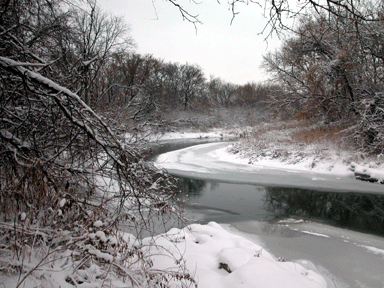
|
|
|
Toronto Ravines – Ours to Preserve
By Ulli Diemer
Seven News, July 9, 1982 To naturalists, visitors, and many Torontonians, Toronto’s ravines are one of the city’s most beautiful features, islands of nature in the midst of a giant metropolis. To some, however, the ravines have always been a nuisance, hard to build in, interrupting the smooth flow of traffic on the city’s grid of streets, ‘waste’ land unsuitable for commercial utilization. As a result, many ravines have simply been filled in, and the streams that ran through them have been permanently confined to underground channels. Others have been used for as dumping grounds: for rubble and garbage, expressways and railways, and for industries best kept out of sight, like gravel pits and brickyards. The city’s most important ravine system, the Don Valley, is still virtually inaccessible for much of its length, isolated by an expressway, a railway track, an arterial road, and high, barbed-wire-topped fences. Others have survived only because their terrain made them hard to build in or dump in. However, the City of Toronto is attempting to make the public more conscious of the need for the preservation of the ravines, and it has now published a pamphlet to that end, entitled “Toronto’s Ravines”. The 24 ravines that still survive in the city (this does not include the other five boroughs or the Metro fringe) have been given some measure of protection through the City’s Ravine Control bylaws. These bylaws prohibit the destruction of trees and other natural vegetation in the ravines without the consent of City Council, except where this is part of a process of maintaining existing garden areas, steps, walls, etc. (Much of the city’s ravine land is in private hands: many of Rosedale’s mansions, for example, stand on huge lots that include ravine slopes.) Also prohibited is any excavation or altering of ravine lands. The bylaws are not intended to permit the City to aquire privately owned ravine lands, but they do aim to protect the ravines as a resource for everyone, and to prevent activities within the ravine areas which are harmful to the environment. Information for owners is available from both the City’s Planning and Development Department and the Parks and Recreation Department. Copies of the pamphlet, or further information on Toronto’s ravines and their protection, is available by calling the City of Toronto Planning and Development Department at 367-7187. It would however be a mistake to assume that ravine protection is now ‘taken care of’. Pressure on the ravines continues. At least two of the boroughs, for example, are planning major housing developments on the edges of ravines, despite strong evidence that this would be destructive and dangerous. Meanwhile another borough has been spending large sums of money to aid homeowners whose houses were beginning to slide into the ravine on whose edge they had been built 20 years ago. Scarborough, which perhaps epitomizes land-wasting forms of development that make public transit and other services prohibitively expensive, is considering allowing a development on its fringe, in the Rouge Valley in an area that houses the last herd of deer living freely in Metro. And destruction by individuals also continues. Last summer for example, a dump truck driver decided to save himself bothersome trips to the dump by emptying his loads of rubble down one of the slopes in St. James Cemetery, into the Rosedale Valley. Ravine preservation, therefore, depends on the vigilance and political persistence of everyone who cares about them. One organization that works actively to prserve ravines and nature generally is the Toronto Field Naturalists, 83 Joicey Blvd, Toronto MSM 2T4. They always welcome new members.
This article was published in Seven News, Volume 13, Number 3, July 9, 1982 Related Topics: |
